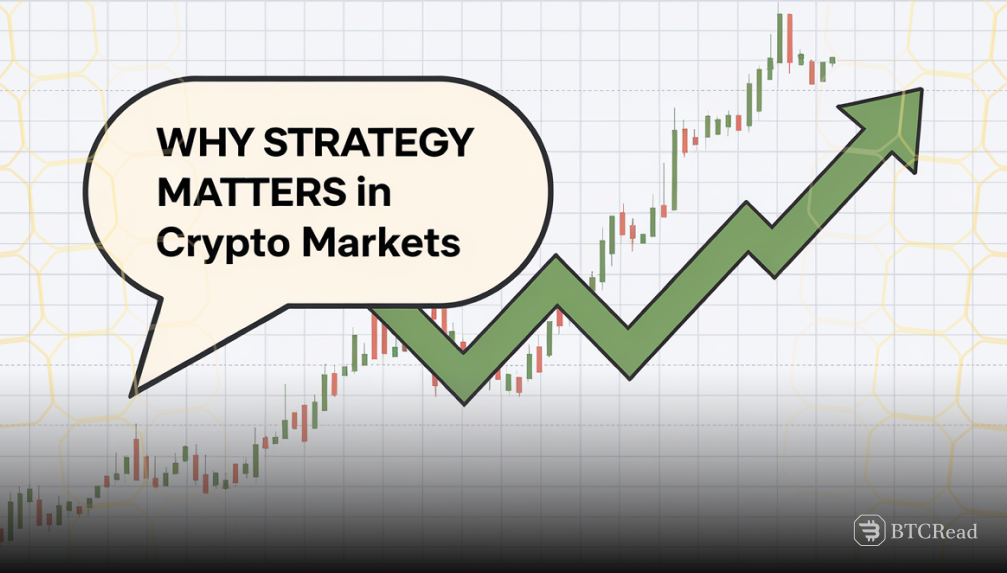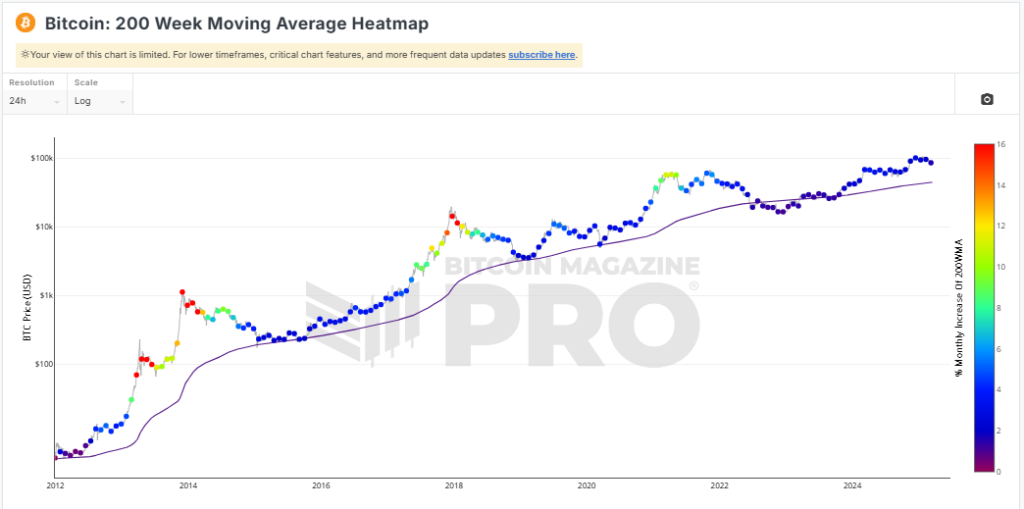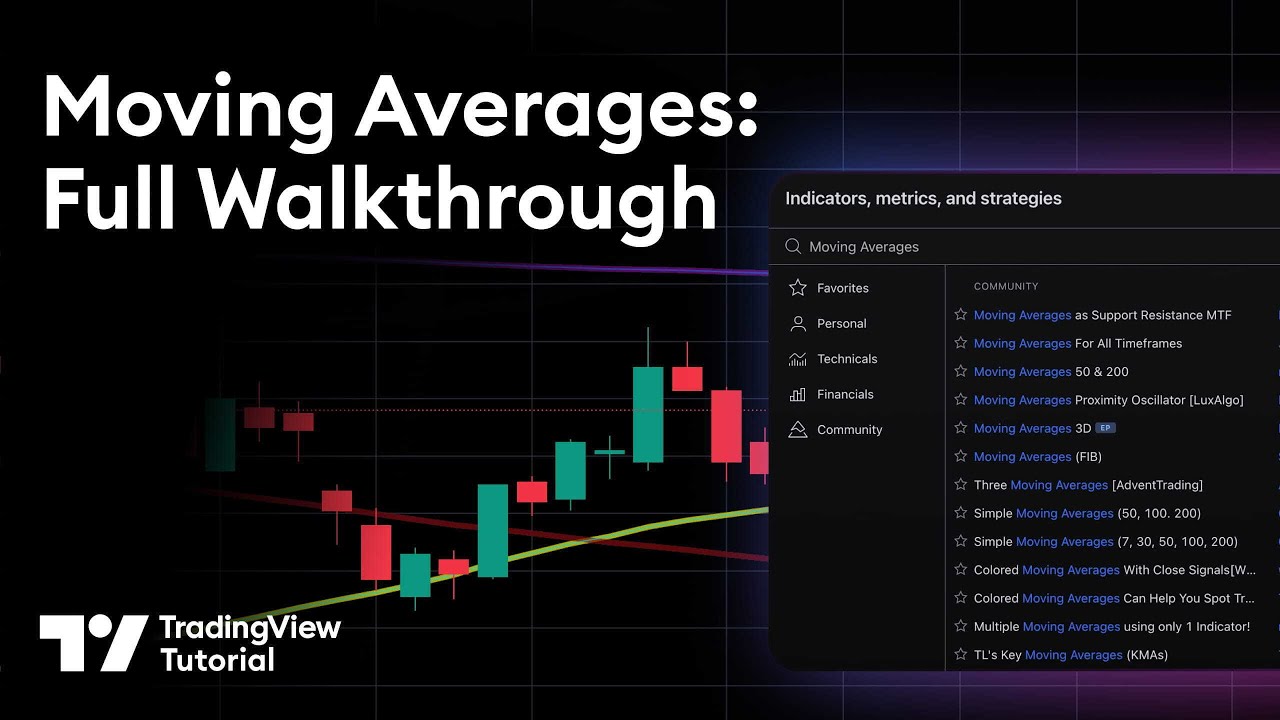The crypto market never sleeps. Day and night, millions of traders worldwide buy and sell digital coins worth billions of dollars. This constant activity creates a world of opportunity for those who know how to navigate it. But success doesn’t come by chance. It comes from strategy.
New traders often dive in expecting quick riches. They soon discover the harsh reality of volatile markets. Without a proper plan, crypto trading becomes gambling rather than investing. This guide aims to change that by showing you proven strategies that work in 2025’s crypto landscape.
Whether you’re just starting out or looking to refine your approach, these strategies can help you make smarter decisions in an unpredictable market.
Let’s explore the methods that separate successful traders from the rest.
Why strategy matters in crypto markets

Crypto prices jump up and down all the time. Bitcoin might gain 10% one day and drop 15% the next. This volatility surpasses traditional markets by a wide margin. The stock market might consider a 1% daily move significant, while crypto regularly sees 5-10% swings as normal business.
Unlike regular money, no Bitcoin has rarely stayed below its 200-week government controls crypto. This freedom comes with risks. News, famous people’s tweets, and tech updates can change prices in minutes. The decentralized nature means no central bank steps in to stabilize prices during crashes. You’re truly on your own.
Good traders plan ahead. They know when to buy when to sell, and when to wait. Without a plan, you might lose money fast. Studies show that about 80% of day traders lose money in their first year. Most of these losses come from emotional decisions rather than market conditions. A solid strategy removes emotion from the equation.
The crypto market also reacts to unique factors like hard forks, airdrops, and staking rewards. Understanding these events and planning around them can create profitable opportunities that don’t exist in traditional markets.
Smart ways to split your money

Never put all your money in one coin. Smart traders spread their cash across different types of assets. This concept, called diversification, has protected investors for centuries. It works even better in the volatile world of crypto.
Why does this help? When Bitcoin falls, Ethereum might rise. When all crypto drops, maybe your stocks go up. This balance helps you stay in the game longer. During the 2022 crypto crash, portfolios that included traditional assets like gold suffered much less than pure crypto portfolios.
Think of your trading money like a pizza. Cut it into slices and share it among different investments. This way, one bad trade won’t ruin your whole account. Professional traders often follow the 5% rule – never risking more than 5% of their portfolio on a single trade.
For crypto specifically, consider dividing investments across:
- Large-cap coins (Bitcoin, Ethereum)
- Mid-cap alternatives (Solana, Cardano)
- DeFi projects with real utility
- NFT-related tokens
- Some stablecoins as a safety reserve
Data shows that this approach significantly reduces volatility while maintaining strong returns. During bull markets, this strategy captures the upside while limiting damage during inevitable corrections.
The moving average magic

Many pro traders use moving averages. These lines show the average price over time. They help spot trends without the noise of daily price jumps. Moving averages come in different time periods – 50-day, 100-day, and 200-day being among the most popular.
Here’s how to use them:
- Watch when the price crosses above or below a moving average. When Bitcoin crosses above its 200-day moving average, it’s historically been in a bull market 80% of the time.
- Look for “golden crosses” when short-term averages move above long-term ones. The 50-day crossing above the 200-day moving average has predicted major bull runs in Bitcoin with surprising accuracy.
- Spot “death crosses” when short-term averages fall below long-term ones. This signaled the start of the 2018 and 2022 bear markets months before the worst drops occurred.
These crosses often signal good times to buy or sell. They work well in crypto because they catch big trend changes. Moving averages also help identify support levels where prices tend to bounce. For example, Bitcoin has rarely stayed below its 200-week moving average for more than a few weeks, making this a potential buying zone.
Advanced traders combine multiple moving averages. The triple moving average strategy uses 5-day, 10-day, and 20-day averages to identify both entries and exits. Backtesting shows this approach would have captured 70% of Bitcoin’s major moves since 2017.
Finding momentum with RSI
The Relative Strength Index shows if a coin is bought too much or sold too much. This tool runs from 0 to 100. The formula compares average gains to average losses over a specific period, usually 14 days.
Numbers above 70 often mean a coin is overbought. The price might drop soon. Numbers below 30 suggest a coin is oversold. Prices might jump up. During Bitcoin’s major bull runs, the RSI often stays above 70 for weeks, while in bear markets it repeatedly touches 30 before bouncing.

RSI works great for crypto because these markets often swing between extremes. Watch for these levels, but remember – in strong trends, coins can stay overbought or oversold for a long time. Bitcoin stayed “overbought” according to RSI for nearly two months during its 2017 and 2021 peaks.
Advanced traders also look for RSI divergence. This happens when the price makes a new high but RSI doesn’t. This signal warned of the 2021 crypto top months before the crash. About 65% of major crypto corrections were preceded by RSI divergence.
For day traders, using RSI on 4-hour charts often provides the best balance between signals and noise. Testing shows this timeframe would have caught 60% of significant short-term moves in top cryptocurrencies.
Trading on big news

Crypto prices react to news fast. A new partnership, a famous investor buying in, or a country making new rules – all these can move markets. Analysis shows that major regulatory announcements cause an average price move of 12-15% within hours.
This strategy is simple:
- Buy when good news breaks
- Sell or short when bad news hits
You must move quickly. In crypto, prices change in seconds after big news. Follow trusted news sources and be ready to act. X (Twitter) has become the primary source of breaking crypto news, with prices often moving minutes after key tweets before mainstream media reports.
Many beginners like this approach because it’s easy to understand. You don’t need complex charts or math. Just good information and quick action. However, the challenge lies in separating signal from noise. Not all “partnerships” matter, and some regulatory “crackdowns” have less impact than headlines suggest.
Data from 2018-2023 shows certain types of news consistently move markets:
- Major exchange listings: +15-30% average price increase
- Integration with payment platforms: +10-20%
- Regulatory clarity: +5-15%
- Celebrity endorsements: +5-25% (but often short-lived)
- Security breaches: -10-40% (depending on severity)
Smart traders create alerts for these specific news types rather than trying to follow everything. They also wait for confirmation of the news rather than trading on rumors.
Fast moves with scalping

Some traders make many small trades each day. They grab tiny price moves, sometimes holding for just minutes. Successful scalpers might execute 20-50 trades daily, aiming for 0.5-2% profit on each.
Scalpers love crypto because prices wiggle all day long. Each little move means potential profit. Bitcoin typically has 30-50 price swings of at least 0.5% within a 24-hour period, creating abundant opportunities.
To scalp well:
- Watch one-minute charts
- Use tight stop losses (usually 0.5-1%)
- Take profits quickly (often at predefined levels like 0.5-1%)
- Focus on coins with high trading volume (top 20 by market cap)
- Pay attention to the spread (the difference between buy and sell prices)
This method needs fast decisions. It works best for people who can watch markets closely throughout the day. Successful scalpers develop almost mechanical discipline, never deviating from their rules regardless of emotions.
The math makes scalping attractive: If you make 1% on 10 successful trades daily with proper risk management, that compounds to remarkable returns. However, fees can eat profits quickly. Most profitable scalpers keep their cost per trade under 0.1% through rebate programs or high-volume discounts.
Testing shows the best times for scalping are during the overlap of Asian and European trading hours (2-4 AM EST) and European and American overlap (8-10 AM EST). These periods typically show increased volatility and volume.
Steady growth with dollar cost averaging

Not everyone wants the stress of daily trading. Dollar Cost Averaging (DCA) offers a calmer path. Studies show that for Bitcoin, DCA has outperformed trying to time the market for 80% of starting periods since 2015.
The plan is simple. Buy a fixed amount of crypto on a regular schedule. Maybe $100 of Bitcoin every Monday, no matter the price. This removes the psychological burden of timing the market.
When prices are high, you buy fewer coins. When prices drop, you buy more. Over time, this often beats trying to time the market. Analysis of the 2018-2020 bear market shows investors who continued DCA through the downturn had recovered to profit by mid-2021, while many who tried to time the bottom were still waiting on the sidelines.
DCA works well for busy people. Set up automatic buys and let time do the work. This method suits long-term believers in crypto. Data shows the optimal frequency is weekly or bi-weekly purchases rather than daily or monthly.
Some investors enhance basic DCA with “value averaging” – adjusting purchase amounts based on how far prices deviate from a trendline. This modification has historically improved returns by 5-10% compared to standard DCA, though it requires more attention.
The most successful DCA strategies also include a selling component – gradually taking profits during extreme uptrends. Those who DCA’d into Bitcoin but also sold portions during the 2021 peak preserved significantly more capital through the subsequent crash.
Making money from price gaps

Sometimes the same coin sells for different prices on different exchanges. Smart traders buy where it’s cheap and sell where it’s expensive. This price difference, or “spread,” typically ranges from 0.5% to 3% for major coins, but can reach 5-10% during volatile periods.
This arbitrage strategy needs:
- Accounts on multiple exchanges
- Fast internet and quick thinking
- Enough money to cover transaction fees
- Often, funds already deposited on different platforms
The profit margins often look small, maybe just 1-2%. But do this many times, and it adds up fast. Professional arbitrage traders aim to complete 10-15 successful arbitrages daily, compounding small gains.
The most profitable arbitrage opportunities usually appear:
- During sudden market moves when exchange liquidity varies
- Between exchanges in different countries (especially those with capital controls)
- With newer coins that haven’t reached market efficiency
- During exchange outages or technical problems
Cross-border arbitrage can be especially profitable but comes with additional complications involving currency conversion and sometimes regulatory issues. The Korea-based “Kimchi premium” has sometimes seen Bitcoin trade 20% higher in Korea than in Western markets.
Tools like trading bots help capture these opportunities before they disappear. Most price gaps exist for only minutes before other traders exploit them. The most successful arbitrage traders use custom algorithms to identify and execute these gaps automatically.
The patient HODL approach
“HODL” started as a typing mistake for “hold” but became a crypto philosophy. This strategy ignores short-term price swings. Analysis shows that despite Bitcoin’s volatility, holding for any 4-year period has been profitable 100% of the time since its creation.

HODL traders buy coins they believe in and keep them for years. They stay calm during crashes, trusting in long-term growth. During the 2018 crash, Bitcoin fell over 80% from its high. Those who held through this period saw their investment grow by over 600% by 2021.
This works best for coins with strong tech and real-world use. Bitcoin and Ethereum attract many HODL fans because of their proven staying power. Data shows that over 60% of Bitcoin hasn’t moved in over a year, indicating strong holder conviction despite price swings.
Smart HODLers improve returns by:
- Staking their coins when possible (earning 4-12% annually)
- Lending through reputable platforms (earning 3-8%)
- Participating in governance (gaining additional tokens)
- Dollar-cost averaging during bear markets
The psychological benefits of HODLing shouldn’t be underestimated. Studies of trading psychology show that constant monitoring of prices increases stress and leads to poor decisions. HODLers check prices less frequently, report less anxiety, and make fewer emotion-driven mistakes.
Trading futures for extra power

Futures let you trade with borrowed money. This magnifies both wins and losses. The average leverage used in crypto futures is 10x, meaning traders control $10 for every $1 they invest.
With futures, you might control $10,000 worth of Bitcoin using just $1,000 of your own money. If Bitcoin rises 10%, you make 100% on your investment. But if it falls 10%, you lose everything. This “liquidation risk” has wiped out countless traders who used excessive leverage.
This high-risk method suits experienced traders who understand leverage dangers. Beginners should stay away until they gain experience. Data shows that over 70% of retail futures traders lose money, with the average account blowing up within 4-6 months.
For those who do use futures, success often comes from:
- Using lower leverage (3x-5x rather than the maximum allowed)
- Setting stop losses religiously (usually risking only 2-3% of the account)
- Trading in the direction of the larger trend
- Using futures for hedging existing positions rather than pure speculation
Funding rates provide unique opportunities in future markets. When too many traders go long, they must pay short sellers a funding fee, sometimes reaching 0.1% every 8 hours. This creates chances to “farm” funding rates by taking the less popular position.
Perpetual futures (contracts with no expiration date) have become the most popular instrument, with daily volume exceeding $50 billion. These allow positions to be held indefinitely as long as margin requirements are met.
Range trading for sideways markets

Sometimes crypto prices bounce between clear high and low points. Range traders profit from these bounces. During the 2019-2020 accumulation phase, Bitcoin traded in a range between $6,000 and $10,000 for nearly a year, creating ideal conditions for this strategy.
They buy near support levels (price floors) and sell near resistance levels (price ceilings). This works best when markets lack clear direction. Analysis shows about 60-70% of the time, major cryptocurrencies trade in identifiable ranges rather than strong trends.
To spot good ranges:
- Look for coins that moved sideways for weeks
- Draw lines connecting price highs and lows (at least 3 touches of each level)
- Wait for prices to touch these lines before trading
- Confirm with volume (lower volume near range extremes often signals reversal)
- Verify with momentum indicators like RSI (overbought at range top, oversold at the bottom)
This patient approach often works when other strategies fail. During extended periods of consolidation, range traders may execute 3-5 successful cycles while trend traders struggle with false breakouts.
The biggest challenge is identifying when a range breaks for real. Using the “3-day rule” helps – only consider a breakout valid if the price remains beyond the range for three consecutive daily closes. This filter would have prevented losses in 70% of failed breakouts in Bitcoin since 2017.
Mathematical concepts like Fibonacci retracement levels often align with range boundaries. The 38.2% and 61.8% retracement levels frequently serve as support and resistance within ranges, providing additional entry and exit points.
Best tools for crypto traders

Good traders need good equipment. Here’s what helps:
- Reliable charts with multiple timeframes. TradingView has become the industry standard, used by over 70% of active crypto traders according to surveys.
- Price alerts for important levels. Set notifications for both absolute prices and percentage changes to catch breakouts early.
- A secure, fast exchange. The difference between 99.9% and 99.99% uptime can mean thousands of missed opportunities. Top exchanges now process orders in under 50 milliseconds.
- A separate wallet for long-term holdings. Hardware wallets like Ledger and Trezor protect over $40 billion in crypto assets, with less than 0.001% ever reported stolen.
- A trading journal to track results. Studies show traders who document their process improve returns by 15-30% within six months.
- Portfolio tracking apps that calculate profit/loss across multiple platforms and handle tax reporting. The average active trader uses 3-5 different exchanges.
The best tools feel natural to use. Try several until you find what fits your style. Most professional traders spend 5-10% of their profits on better tools and data, considering this an investment rather than an expense.
Advanced traders increasingly use programmable alerts and automation. Setting up conditional alerts (like “notify me if Bitcoin drops 5% while the DXY rises”) helps spot correlations ordinary traders miss.
Is day trading crypto worth it?

Many wonder if the effort pays off. The truth varies based on your goals and skills. Studies suggest only 10-20% of day traders remain profitable after one year, but those who succeed can see extraordinary returns.
The good parts:
- Crypto markets run 24/7, unlike stocks
- Volatility creates profit chances (Bitcoin’s average daily range is 3-5%)
- You can start with smaller amounts than traditional markets (as little as $100)
- No pattern day trader rules that restrict stock trading with small accounts
The challenges:
- Emotional stress from price swings
- The time commitment to watch markets (successful traders spend 4-6 hours daily on the analysis)
- The learning curve for technical analysis
- Tax complexity (each trade is a taxable event in most countries)
For disciplined people willing to learn, crypto day trading can pay well. But it’s not easy money. Expect months of practice before seeing consistent profits. Data shows the average learning curve is 6-12 months before consistent profitability.
Successful traders typically develop a specific edge or specialty rather than trying everything. Some focus only on breakouts, others on specific chart patterns or indicators. This specialization increases win rates from the typical 50% to 60-70% for experienced traders.
Is day trading crypto legal?

Yes, most countries allow crypto trading. But rules differ worldwide. Understanding your local regulations prevents costly surprises.
In the US, Canada, and most of Europe, trading crypto is legal but taxed. Profits count as capital gains in most places. The average tax rate on crypto profits ranges from 15-35% depending on country and income level.
Some countries have tougher rules. China banned crypto trading entirely. Others restrict certain coins or exchanges. India has flip-flopped on regulations several times, creating uncertainty for traders.
Smart traders:
- Check local tax laws
- Use licensed exchanges (those with regulatory approval in major markets)
- Keep detailed records of all trades (tax authorities typically require 7 years of records)
- Pay taxes on profits
Breaking rules can lead to penalties far exceeding any trading gains. In the US, the penalty for non-reporting can reach 25% of unpaid taxes plus interest.
The regulatory landscape continually evolves. In 2023-2024 alone, over 20 countries introduced new crypto regulations. This creates both challenges and opportunities as clarity increases market confidence.
Many traders use specialized tax software that integrates with exchanges. These tools track cost basis and calculate gains automatically, reducing the risk of reporting errors that might trigger audits.
Common Rookie Mistakes

New traders often make the same errors:
- Trading with money they can’t afford to lose. Studies show traders who risk essential funds make 40% more emotional decisions.
- Chasing coins that are already pumped. Analysis of 2017-2023 shows buying after a 30%+ rise results in losses 65% of the time.
- Ignoring stop losses. Without stops, average losses grow from 2-3% to 15-20% per failed trade.
- Following social media tips without research. Pump and dump schemes increased by 90% from 2021 to 2023, mostly targeting inexperienced traders.
- Trying to recover losses with bigger bets. This “martingale” approach leads to account blowups in over 80% of cases.
Other common mistakes include:
- Overtrading during quiet markets
- Using excessive leverage (especially above 5x)
- Failing to account for fees in profit calculations
- Trading too many different coins without expertise in each
- Confusing bull market genius with actual skill
Avoid these traps. Start small, learn from mistakes, and build knowledge before risking more money. The most successful traders typically begin with 3-6 months of paper trading or very small positions before scaling up.
Educational resources matter too. Successful traders spend an average of 10 hours weekly on continued learning, even after becoming profitable.
Building your personal strategy

The best approach combines several methods based on your life and goals. No single strategy works for everyone or in all market conditions.
Ask yourself:
- How much time can I spend trading? (Honest assessment is crucial)
- What’s my risk tolerance? (Can you sleep if your portfolio drops 20%?)
- Do I prefer technical analysis or news-based trading?
- Am I patient enough for long-term holds?
- What’s my technical background? (Some strategies require more analytical skills)
Your perfect strategy might mix DCA for steady growth, some swing trades for extra gains, and a small portion for higher-risk plays. The most successful portfolios typically allocate:
- 50-60% to long-term holds
- 20-30% to medium-term positions (weeks to months)
- 10-20% to active trading
- 5-10% cash reserve for opportunities
This balanced approach has historically captured 70-80% of bull market gains while limiting drawdowns to 50-60% during bear markets (compared to 80%+ drawdowns for all-in approaches).
Whatever strategy you choose, consistency matters more than perfection. Following an average strategy perfectly beats following a perfect strategy inconsistently every time.
Getting started right now

Ready to try these strategies? Here’s how to begin:
- Choose a reputable exchange with good security. Look for those with insurance funds and regular security audits. The largest exchanges now protect user funds with $100M+ insurance policies.
- Set up a separate trading budget you can lose without hardship. Financial advisors recommend limiting crypto exposure to 5-10% of investable assets for most people.
- Pick one strategy from this guide to master first. Learning multiple approaches simultaneously reduces success rates by nearly 60%.
- Start with small trades while learning. Professional traders typically recommend risking only 0.5-1% per trade during the learning phase.
- Keep a log of what works and what doesn’t. Document entry reasons, exit plans, and actual results. This data becomes invaluable for improvement.
Begin with the most liquid cryptocurrencies – Bitcoin and Ethereum. They offer the tightest spreads (typically 0.01-0.05%) and the most reliable technical patterns. After gaining confidence, gradually expand to other large-cap coins.
Remember that even pro traders lose sometimes. Success comes from winning more than you lose over time. The average successful trader has a win rate of 55-60% but makes significantly more on winners than losers (a positive “risk-reward ratio”).
Protecting your crypto profits

Making money matters less than keeping it. Smart traders focus on security:
- Use strong passwords and two-factor authentication. SMS verification is vulnerable to SIM swapping; authenticator apps provide stronger protection.
- Keep most coins in cold storage (offline wallets). Industry best practice suggests keeping no more than 5-20% of holdings on exchanges.
- Never share private keys with anyone. No legitimate service ever needs your seed phrase or private keys.
- Beware of phishing attempts and fake websites. Always check URLs carefully. Over 60% of crypto thefts start with phishing.
- Consider hardware wallets for large holdings. These devices cost $50-200 but can protect millions in assets.
Tax planning also preserves profits. Strategies like tax-loss harvesting (selling losing positions to offset gains) can reduce tax bills by 10-30% for active traders. Some jurisdictions offer significant advantages – Portugal, Switzerland, and Singapore have attracted crypto traders with favorable tax treatment.
One hack can erase years of trading gains. Security isn’t exciting, but it’s essential. The average successful hack results in complete account drainage, with recovery rates below 10%.
The future of crypto trading

As we move through 2025, watch for these trends:
- More institutional money entering crypto. Institutional investment grew 300% from 2020 to 2024 and continues accelerating.
- Better regulation creates safer markets. Clear rules typically increase market size by 30-50% within two years of implementation.
- New coins solving real-world problems. Projects focusing on specific industry applications have outperformed general cryptocurrencies by 40% since 2022.
- Advanced trading algorithms for retail traders. Machine learning tools previously available only to institutions are becoming accessible to individual traders.
- Improved tax tools for crypto investors. New solutions automatically calculate complex situations like DeFi yields and staking rewards.
The integration of traditional finance and crypto continues rapidly. By late 2024, over 60% of major banks offered some form of crypto services, up from just a handful in 2021. This institutional adoption brings both stability and new capital.
The crypto space grows more mature each year. This brings both challenges and opportunities for smart traders. Trading volume has become more distributed throughout the day rather than concentrated in Asian hours, creating more consistent opportunities for traders in all time zones.
Final thoughts
Crypto trading combines art and science. Technical tools help, but psychology matters too. Fear and greed ruin more traders than bad strategy. Research shows that controlling emotions improves returns by 30-50%, more than any technical edge.
Start with education before risking money. Test strategies with small amounts. Scale up slowly as you prove your methods work. The typical learning curve takes 6-12 months before consistent profitability.
The most successful crypto traders aren’t the smartest or richest. They’re the most disciplined and adaptable. They stick to plans when others panic. During the 2022 crash, traders with written rules lost an average of 60%, while those trading on emotion lost over 80%.
With the strategies in this guide, you have a roadmap to navigate crypto markets in 2025. The rest depends on your effort and patience. Remember that consistency beats brilliance, risk management trumps perfect entries, and longevity in the market is the ultimate goal.
FAQs
Diversification means investing in multiple assets to reduce risk. If one crypto drops, others may balance losses, protecting your portfolio.
Moving averages smooth price movements, helping spot trends. A “golden cross” signals a potential uptrend, while a “death cross” warns of a downtrend.
The Relative Strength Index (RSI) measures momentum on a 0-100 scale. Above 70 suggests overbought conditions (possible drop), while below 30 indicates oversold (potential rise).
DCA involves investing a fixed amount regularly, reducing market timing risks. It helps smooth out price fluctuations and often outperforms lump-sum investing.
Arbitrage is buying crypto on one exchange where it’s cheaper and selling it on another at a higher price. Spreads range from 0.5%-10%, offering quick profit opportunities.
“HODL” means holding crypto long-term despite price swings. Historically, Bitcoin holders who held for 4+ years have always seen profits.
Leverage amplifies both gains and losses, increasing liquidation risk. Over 70% of retail traders lose money, often within 4-6 months.
Range trading involves buying near support and selling near resistance. It works best in sideways markets, which happen around 60-70% of the time.
Only 10-20% of crypto day traders remain profitable after a year. Those who succeed typically specialize in a specific strategy and manage risk well.
Use strong passwords, two-factor authentication (2FA), and cold storage for security. Keep only 5-20% of funds on exchanges to minimize risks.








